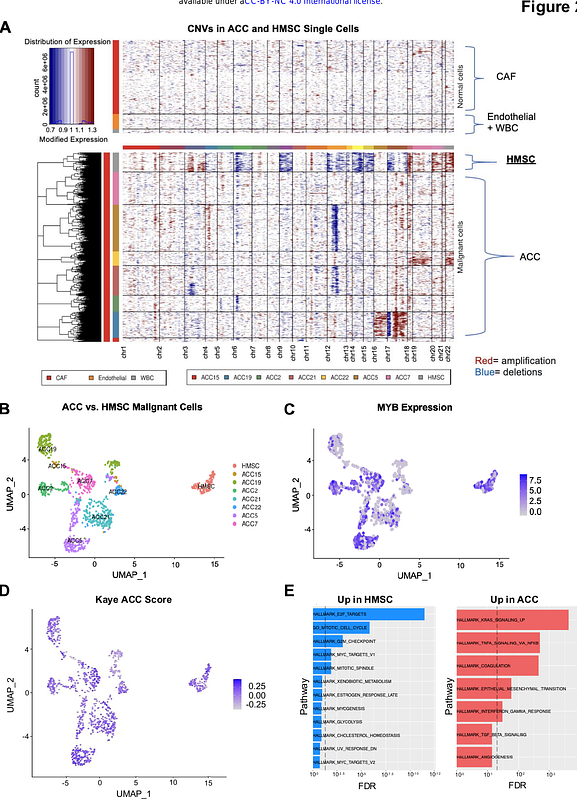Single-cell transcriptomic analysis of HPV-related multiphenotypic sinonasal carcinoma uncovers MYB-HPV association

Single-cell transcriptomic analysis of HPV-related multiphenotypic sinonasal carcinoma uncovers MYB-HPV association
Wizel, A.; Spence, M. D. A.; Mints, M.; Britton, W.; Okolo, O.; Yu, V.; Cioffi, I.; Caruana, S.; Troob, S. H.; Faquin, W. C.; Lin, D. T.; Tirosh, I.; Puram, S. V.; Parikh, A. S.; Drier, Y.
AbstractHuman papillomavirus (HPV)-related multiphenotypic sinonasal carcinoma (HMSC) is a rare tumor that morphologically resembles high grade adenoid cystic carcinoma (ACC), yet exhibits indolent clinical behavior. Both demonstrate MYB proto-oncogene upregulation, but HMSC lacks the MYB translocation typically seen in ACC. Transcriptional changes in HMSC tumors remain uncharacterized. We performed single-cell RNA sequencing (scRNA-seq) on a human HMSC tumor and compared expression profiles with published ACC and oropharyngeal squamous cell carcinoma (OPSCC) scRNA-seq datasets. Primary malignant cells from HMSC (n=134) and ACC (n=980) clustered separately, and HMSC lacked bicellular differentiation into luminal and myoepithelial cells, distinguishing it from ACC. A greater proportion of HMSC cells expressing HPV-related genes (HPVon) expressed MYB (83% vs. 62%, p=0.022) and MYB targets (p=6.4x10-6), suggesting an HPV-MYB association. This finding was validated in HPV-positive OPSCC, with 7/10 tumors showing MYB upregulation in HPVon versus HPVoff cells (p<0.05). A 264-gene signature from HPVon HMSC cells was also associated with worse prognosis in HPV+ OPSCC (p<0.003), suggesting an alternate role for HPV that has not been well characterized. Further validation of the HPV-MYB association and prognostically relevant HPV gene signature may improve patient stratification and therapeutic strategies in HPV-related malignancies.